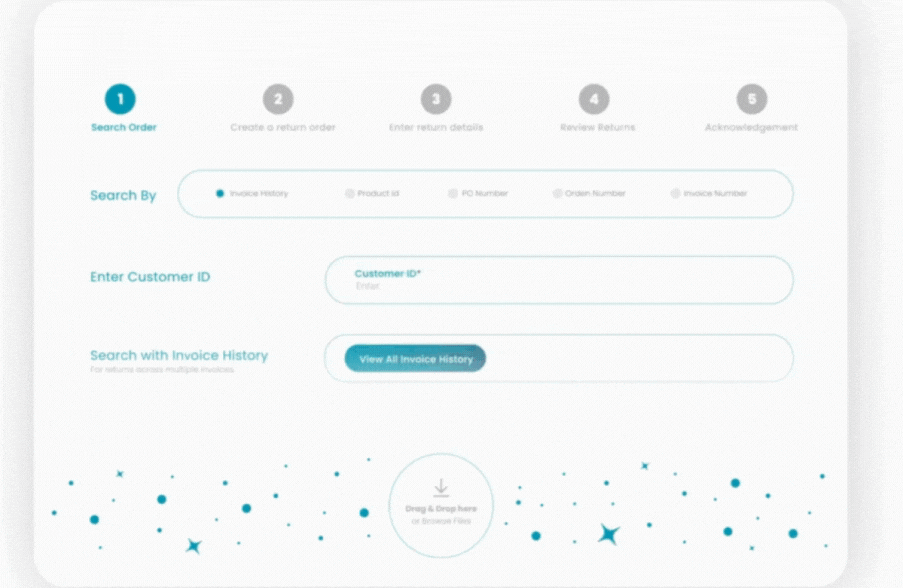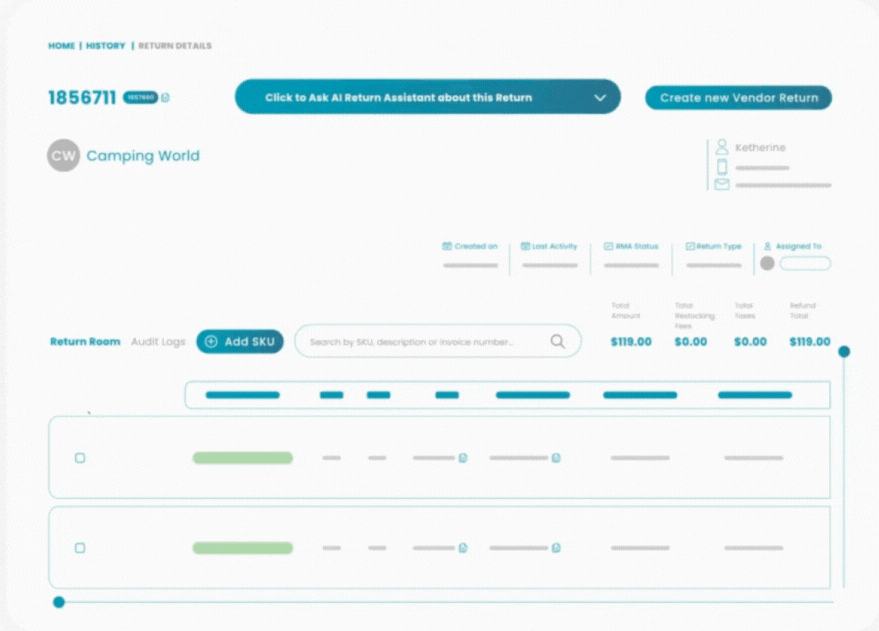Returns: The Silent Efficiency Killer in Your Business
Returns don’t generate revenue, but they consume enormous resources. They clog up warehouses, tie up your team, and pull focus away from value-creating activities. Handled poorly, they can damage customer loyalty and hurt your brand reputation.
When you look at all the transactions in your business, Return Merchandise Authorizations (RMAs) stand out as the perfect candidate for AI-powered automation. They’re repetitive, rules-based, and highly frustrating for both customers and employees—making them ripe for transformation.
The Problem: Why the RMA Process is Broken
1. Returns Drain Resources
Every RMA requires multiple touchpoints—customer service handling the request, warehouse staff inspecting goods, and finance reconciling credits. These are high-cost, low-value actions that take your people away from sales, operations, and customer growth.
Example: For one industrial distributor, processing a single complex return took the combined time of three departments—time that could have been spent closing new business.
2. Customer Experience Suffers
By the time a customer initiates an RMA, they’re already disappointed. If they face long hold times, unclear policies, or weeks of waiting, their frustration only grows.
In an Amazon-primed world, anything less than a fast, transparent returns process risks losing that customer forever.
3. Manual Processes Create Bottlenecks
Many companies still run returns through emails, phone calls, or paper forms. These outdated methods slow everything down, introduce errors, and leave customers guessing about the status of their return.
4. Returns are Complex Transactions
Every RMA has its own conditions:
- Is it serialized?
- Is it part of a kit?
- Is it a vendor-stocked item?
- Does the manufacturer even want it back?
Without a streamlined, intelligent system, answering these questions eats up hours—and slows the entire reverse logistics chain.
The Solution: AI-Powered RMA Automation
AI turns RMAs from a cost center into a competitive advantage by making the customer returns portal and internal decision-making intelligent, fast, and accurate.
1. AI Chat Assistants That Understand Your Policies
Your customer-facing AI assistant can:
- Instantly confirm return eligibility.
- Provide restocking fee details.
- Walk customers through return initiation.
This eliminates calls and emails to your team while ensuring every customer receives the same accurate information.
2. AI That Handles Email and Document-Based Returns

Not all customers want to chat—some email or send attachments like invoices or defect photos. AI can:
- Read the email.
- Identify the product.
- Check return eligibility.
- Generate an RMA automatically.
Example: A customer sends in a blurry photo and order number. AI matches it to the correct item, verifies the warranty window, and issues the RMA—all without human involvement.
3. Proactive Customer Updates

AI keeps customers informed at every stage:
- Return receipt confirmation.
- Processing updates.
- Refund or replacement status.
This reduces inbound “Where’s my return?” calls and builds trust.
4. Intelligent Return Routing
AI evaluates each return and routes it instantly:
- Salable items → back into inventory.
- Defective items → repair or disposal.
- Non-stock/vendor items → flagged for vendor RGA approval.
This speeds resolution and avoids warehouse congestion.
The Business Impact of AI RMA Automation

- Free Up Teams – Shift customer service, warehouse, and finance staff from low-value RMA work to growth initiatives.
- Enhance Customer Experience – Faster, smoother returns keep customers loyal.
- Reduce Costs – Minimize manual handling and labor expenses.
- Improve Accuracy – Eliminate misrouted returns and policy errors.
Why This Matters Now
Customer expectations for returns are higher than ever. While RMAs will never be a profit center, AI can turn them from a drain into a differentiator.
By automating the RMA process—especially in your customer returns hub—you’re not just fixing inefficiency; you’re creating an opportunity to:
- Win customer trust.
- Operate leaner.
- Stand out in your market.
In short: If you want to reclaim lost time, cut costs, and make customers happier, RMAs are the perfect transaction to point AI at.
Tags:
AI-powered returns , RMA automation , customer returns portal , reverse logistics automation , returns process efficiency


Comments